News
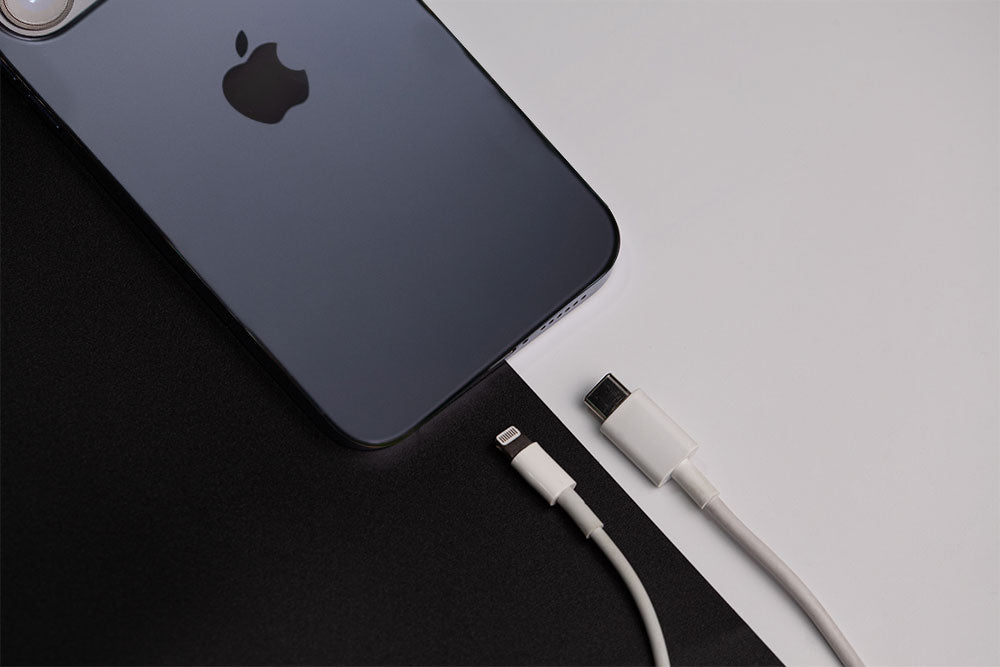
iPhone charger cables
How to Choose the Right iPhone Charger Cable
So, have you ever gone to charge your iPhone charger cables, only to find that your charger cable isn’t working? Or maybe you’ve borrowed a friend’s charger, and it took forever to power up your device. Moreover, not all charger cables are the same, and choosing the right one can make a huge difference in how well—and how fast—your iPhone charges. Let’s dive into everything you need to know about iPhone charger cables, so you can pick the perfect one!
1. What’s So Important About the Right Charger Cable?
So, using the right iPhone charger cable is super important! Here’s why:
Charging Speed: A good charger cable can power up your device faster. This means you can get back to playing games, watching videos, or texting your friends sooner!
Phone Health: The right charger cable helps keep your battery healthy. Low-quality cables can damage your iPhone’s battery over time.
Durability: Some cables last longer than others. Choosing a high-quality cable means it won’t break or fray as quickly.
2. Types of iPhone Charger Cables
So, there are different types of iPhone charger cables. Moreover, the two main ones are Lightning cables and USB-C cables. However, here’s what you need to know about each:
Lightning Cable
So, the Lightning cable is the most common charger for iPhone charger cables. Most iPhones use this cable, so you’ve probably seen or used one before. Moreover, it has a small connector that fits into the charging port on your iPhone.
Pros: Works with most iPhones and is widely available.
Cons: It doesn’t always support fast charging on newer iPhones.
USB-C to Lightning Cable
So, newer iPhones can use a USB-C to Lightning cable, which can charge your device even faster. Moreover, you’ll need a USB-C charging adapter (the small box that plugs into the wall) to use this cable.
Pros: Faster charging speeds and compatible with newer Apple products.
Cons: You may need to buy a USB-C adapter if you don’t already have one.
3. How to Check If a Cable Is Compatible with Your iPhone
So, not all charger cables work with every iPhone charger cables model. However, here’s a quick guide to checking compatibility:
Look at Your iPhone Model: If you have an iPhone 5 or newer, it probably uses a Lightning cable.
Check for a Lightning Port: Look at the bottom of your iPhone. If it has a small, oval-shaped port, it uses a Lightning cable.
Ask a Parent or Trusted Adult: They might be able to help you figure out if a USB-C to Lightning cable is right for your device.
4. The Importance of MFi Certification
So, have you ever heard of MFi? It stands for “Made for iPhone,” which means Apple has tested and approved a cable to work safely with your iPhone. Here’s why MFi certification matters:
Protects Your iPhone: MFi-certified cables are designed to work properly with Apple devices, reducing the risk of damage to your iPhone.
Reliable Performance: These cables often charge faster and last longer than non-certified ones.
Safer for You and Your Phone: Non-certified cables can overheat, which is dangerous for your phone and even you!
To check if a cable is MFi-certified, look for the “Made for iPhone” logo on the package.
5. Materials Matter: What’s Your Cable Made Of?
Charger cables come in different materials, which can affect how long they last. Here are the most common materials you’ll find:
Plastic
Pros: Lightweight and usually cheaper.
Cons: Plastic cables can wear out quickly, especially if they’re bent a lot.
Nylon Braided
Pros: Very durable and resistant to fraying. Great if you’re tough on your cables!
Cons: Can be a bit more expensive than plastic.
Kevlar
Pros: Extra strong and often used in heavy-duty cables.
Cons: These can be a bit thicker and pricier.
If you find that your cables break easily, a nylon braided or Kevlar cable could be a great choice!
6. Length Matters: Picking the Right Cable Length
Ethernet adapter charger cables come in different lengths, from short ones to extra-long ones that stretch several feet. Here’s a guide to picking the right length:
1-3 Feet: Good for charging close to a power source, like at a desk or next to your bed.
4-6 Feet: Great for more flexibility, like when you want to use your phone while it’s charging but still need some room to move.
10 Feet or More: Super long cables are fun but can be bulky and might tangle easily. These are best for situations where the outlet is far away.
Think about where you’ll be charging your iPhone most often to help you choose the right length!
7. Fast Charging: What You Need to Know
Fast charging is a cool feature on newer iPhones, but not all cables support it. Here’s what you need to know:
Look for USB-C to Lightning Cables: These support faster charging when used with a USB-C adapter.
Make Sure Your iPhone Supports Fast Charging: iPhone 8 and newer models support this feature.
Fast charging can fill up your battery faster, which is super handy if you’re in a rush!
Conclusion
Picking the right iPhone Apple Accessories cable might seem complicated, but it’s really all about understanding what works best for your device and lifestyle. Keep these tips in mind, and you’ll be a charger cable expert in no time!
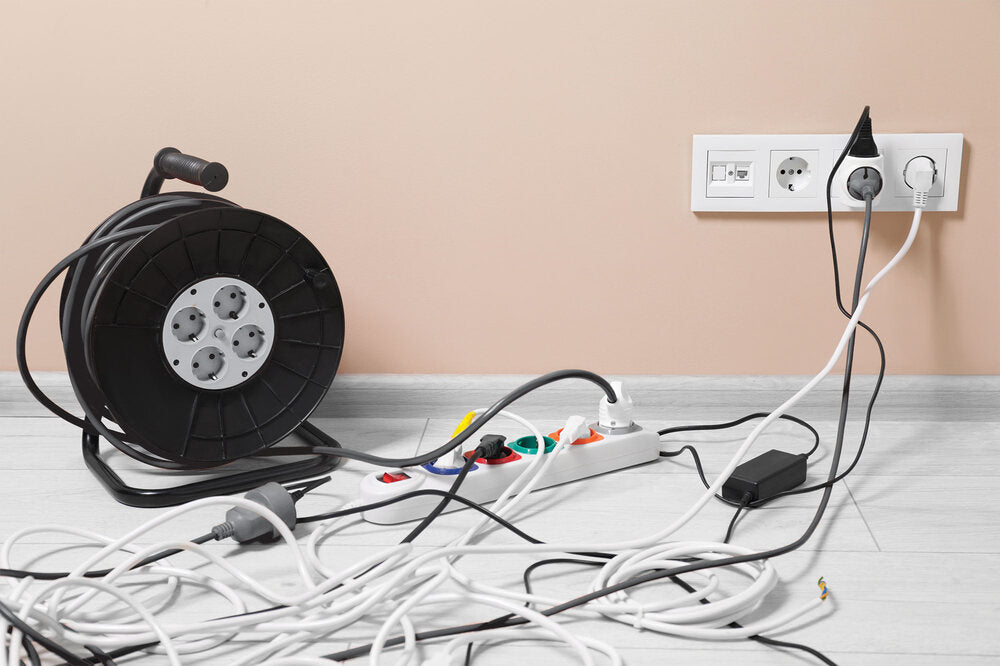
Indoor Cables Reels
Top 5 Uses of Indoor Cable Reels in Home and Office Settings
Indoor cable reels are becoming essential tools in both home and office environments. These compact and often retractable devices offer a convenient way to manage cables, keeping spaces organized and safe from tangles or tripping hazards. In today’s tech-driven world, having reliable cable management solutions not only makes workspaces look cleaner but also enhances functionality.
This article will explore the top five uses of indoor cable reels in homes and offices, highlighting how they can simplify and improve cable management.
1. Efficient Cable Management for Electronic Devices
Whether it’s at home or in the office, electronic devices are part of daily life. Indoor cable reels are particularly valuable when dealing with multiple devices that require power or connectivity. In home offices, where laptops, monitors, and other gadgets abound, a network cable reel or retractable network cable reel can organize cables effectively, reducing clutter and preventing unnecessary tangles.
Organized Workspaces: By using indoor cable reels, you can maintain a more organized workspace. The cables retract into a reel, so you only extend them as needed, minimizing the mess created by lengthy cables that are usually left lying around.
Increased Accessibility: When you need to relocate devices, the retractable cable reels make it easier. You won’t need to unplug cables and carry them separately; simply retract, move, and plug in again.
Enhanced Safety: Reducing the clutter of cords can also prevent accidents. Tripping over loose cables is a common hazard, especially in shared office spaces or homes with children. Indoor cable reels help secure cables, making the area safer for everyone.
2. Improving Home Entertainment Systems
Home entertainment setups are often hubs of tangled wires, with many devices like TVs, gaming consoles, and speakers all interconnected. Indoor cable reels can significantly improve the look and organization of these setups, allowing homeowners to enjoy their spaces without worrying about clutter or tripping hazards.
Simplified Cable Routing: With indoor cable reels, you can easily adjust cable lengths based on device placement. When rearranging or cleaning, simply retract the cables into the reel, providing quick and easy access without the hassle of untangling cords.
Better Aesthetics: No one enjoys looking at a mess of cables under the TV stand. Using indoor cable reels can streamline the appearance of entertainment systems, allowing you to maintain a neat, organized, and aesthetically pleasing setup.
Easy Adaptation to New Devices: When adding a new device, retractable network cable reels allow for easy extension to accommodate the new equipment without having to reroute entire cables.
3. Flexible Connectivity in Meeting Rooms and Workstations
Modern workplaces rely on technology that often requires various types of cables, from HDMI and USB cables to network connections. Indoor cable reels provide flexible solutions for managing these cables, especially in spaces where connectivity needs may change regularly, such as conference rooms and hot desks.
Efficient Setup and Tear-Down: Meeting rooms frequently host different groups with unique setup requirements. Indoor cable reels make it easy to extend cables only when needed and retract them afterward, reducing setup time and keeping the room tidy for the next group.
Streamlined Cable Sharing: In shared workspaces, retractable network cable reel allows multiple users to access a single network connection easily. Employees can pull out the necessary length of cable and retract it when finished, simplifying shared connectivity without leaving a mess.
Reduced Wear and Tear on Cables: Frequent bending and coiling of loose cables can lead to wear and eventually damage the cables. Indoor cable reels offer a more durable solution, extending the life of expensive cables and reducing replacements.
4. Simplifying Temporary Workspaces and Events
Indoor cable reels provide value when setting up temporary workspaces. These scenarios frequently require various electronic gadgets to be connected quickly and cable reels make it easy to adjust.
Quick Setup and Break-Down: Indoor cable reels allow for quick deployment of essential cables without the requirement of detangling and organizing. Once the occasion is over, withdrawing cables is fair as fast, making cleanup easy.
Versatile to Different Needs: In temporary setups, needs can differentiate from control cables for computers to network cable connections. Indoor cable reels provide flexibility, allowing for various cable types to be available on-demand, so everybody has the control and network they require without a untidy setup.
Versatile and Space-Efficient: Indoor cables reels are compact, making them simple to carry and store when they are not in use. This feature is beneficial in event planning, where compact solutions are valued for reducing equipment space.
5. Organized Cable Management for Home Office Equipment
With the rise in remote work, home offices are essential for productivity. Indoor Cables Reels are essential for managing cables in home offices where space is often limited, and clutter can quickly accumulate.
Enhanced Productivity: Working in an organized environment increases focus and reduces distractions. With indoor cable reels, managing computer and charging cables becomes easier, allowing you to concentrate on tasks without the messy wires.
Convenient Charging Stations: Many home offices have mobile devices, such as laptops and phones, that need regular charging. With retractable network cable reel or regular indoor cables reels, you can set up a clean and efficient charging station without a tangled mess of charging cords.
Maximized Desk Space: In small home offices, desk space is precious. Indoor cable reels prevent cords from taking up valuable room, allowing for a cleaner desk area.
Choosing the Right Indoor Cable Reel for Your Needs
With various types of cable reels on the market, choosing the right one is essential for your specific needs. Here are a few factors to consider:
Cable Type: For network connections, a retractable network cable reel is ideal. This type of reel allows for fast and easy access to network connections.
Length Requirements: Different spaces require different cable lengths. Make sure the reel you choose can accommodate your setup without requiring extra extensions.
Portability and Flexibility: If you frequently move between spaces or need a portable option, look for compact, easy-to-carry cable reels.
Conclusion
Indoor cable reels provide efficient, safe, and aesthetic solutions for cable management in both home and office settings. From keeping entertainment systems tidy to enhancing productivity in home offices, these reels offer a versatile solution to the common issue of tangled, messy cables. Their retractable nature makes them especially beneficial, providing flexibility, reducing wear, and allowing easy setup and tear-down in shared spaces.
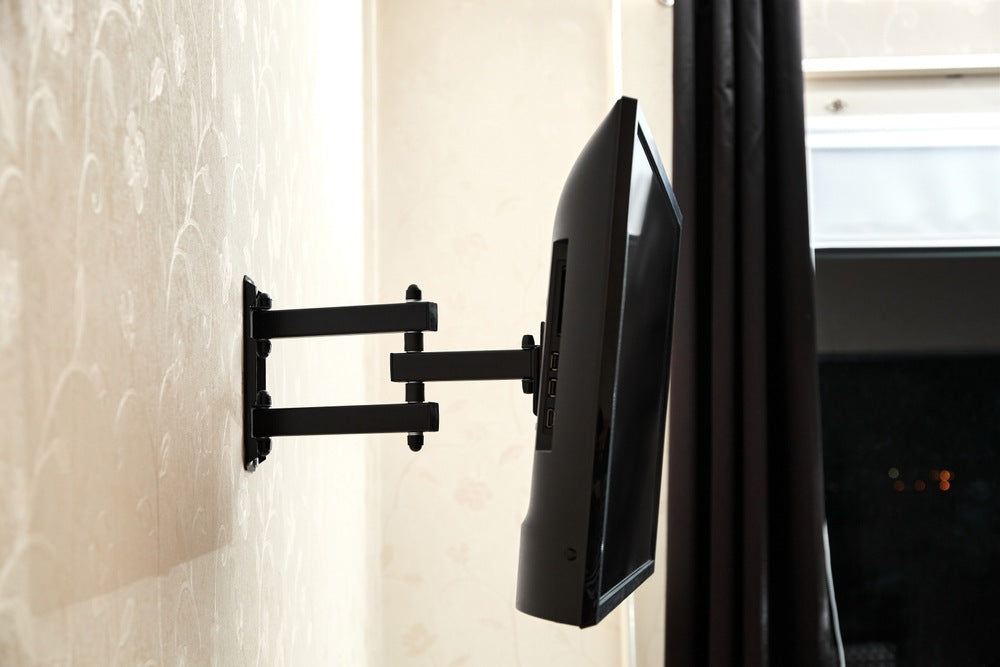
LCD TV Bracket
Best LCD TV Brackets for Your Home Setup Today
So, LCD TVs are a fantastic way to enjoy your favorite shows, movies, and video games in high definition. But what if you want to set up your new LCD TV BRACKETS in a way that maximizes space and comfort? That’s where TV brackets come in. Moreover, TV brackets allow you to mount your TV on a wall or stand, giving you the best viewing angle and making your home setup look sleek and modern.
Furthermore, in this blog, we’ll explore some of the best TV brackets available today, along with tips for choosing the perfect one for your home setup. We’ll break it down so it’s easy to understand for all ages!
Why Use a TV Bracket?
Before diving into the types of TV brackets, let's understand why having one can be a game-changer for your home entertainment system.
Saves Space: Mounting your TV on a wall means you don’t need a large TV stand. This frees up floor space, making your room feel bigger and less cluttered.
Improves Viewing Angle: With the right bracket, you can tilt or swivel your TV to get the perfect viewing angle. Whether you’re watching from the couch, the floor, or even your bed, you’ll always have the best view.
Safety: Keeping the TV out of reach of small children or pets can prevent accidents. TVs on stands can tip over if bumped, but when mounted securely on the wall, they’re much safer.
Stylish: A wall-mounted TV gives your living room or bedroom a sleek, modern look.
Now that you know why brackets are awesome, let’s dive into the types of LCD TV BRACKETS and which ones are best for different setups.
Types of LCD TV Brackets
So, there are several types of TV brackets to choose from, and each one has its unique benefits. Here are the most common types:
1. Fixed TV Brackets
A fixed TV bracket, also called a flat or low-profile bracket, holds your TV snugly against the wall. It doesn’t allow you to move or tilt the TV once it’s mounted.
Best for: Rooms where you’ll always be watching the LCD TV BRACKETS from the same spot, like a living room with a couch directly in front of the TV.
Pros:
Affordable: Fixed brackets are usually the cheapest option.
Slim Profile: Keeps the TV very close to the wall for a clean, sleek look.
Cons:
No Adjustability: You can’t tilt or swivel the TV, so you need to make sure it’s mounted at the right height.
Top Pick: Vogel’s Fixed TV Bracket
This bracket is sturdy and easy to install, making it a great choice if you want a simple, low-profile look for your TV.
2. Tilt TV Brackets
Tilt brackets allow you to adjust the angle of your TV up or down. This is especially helpful if you’re mounting your LCD BRACKETS higher on the wall, such as above a fireplace, and want to tilt it downward for better viewing.
Best for: Rooms where you need to mount the TV higher up, like above a fireplace or in a bedroom where you watch TV from bed.
Pros:
Adjustable Viewing Angle: You can tilt the TV to avoid glare or improve the viewing angle.
Easy to Install: Most tilt brackets are simple to install and adjust.
Cons:
Limited Movement: You can tilt the TV up and down but can’t swivel it side to side.
Top Pick: ECHOGEAR Tilt TV Wall Mount
This tilting mount is highly rated for its easy adjustment and strong build, allowing you to tilt your TV for the best viewing experience without hassle.
3. Full-Motion TV Brackets
Full-motion, or articulating, TV brackets give you the most flexibility. You can tilt, swivel, and pull the TV away from the wall to adjust the position as needed.
Best for: Rooms where you watch TV from different spots or angles, like an open living room or kitchen. Full-motion brackets are also great if you want the option to move your TV to avoid sunlight glare.
Pros:
Maximum Flexibility: You can adjust the TV to face different parts of the room, making it perfect for open spaces.
Perfect for Avoiding Glare: If there’s a window causing glare on your TV, you can swivel the screen to avoid it.
Cons:
More Expensive: Full-motion brackets tend to cost more than fixed or tilt mounts.
Takes Up More Space: Since the TV can be pulled away from the wall, it doesn’t sit as flush as it would with a fixed mount.
Top Pick: Sanus Full-Motion TV Mount
Sanus makes some of the best full-motion TV mounts available. This model is easy to install. It gives you full control over the position of your TV, making it perfect for larger rooms.
Conclusion
Choosing the best TV BRACKETS for your home setup is all about finding the right balance between style, flexibility, and convenience. Whether you choose a fixed bracket for a clean, simple look, a tilt bracket for an elevated TV, or a full-motion bracket for maximum flexibility, the perfect option is out there to make your TV watching experience more enjoyable.
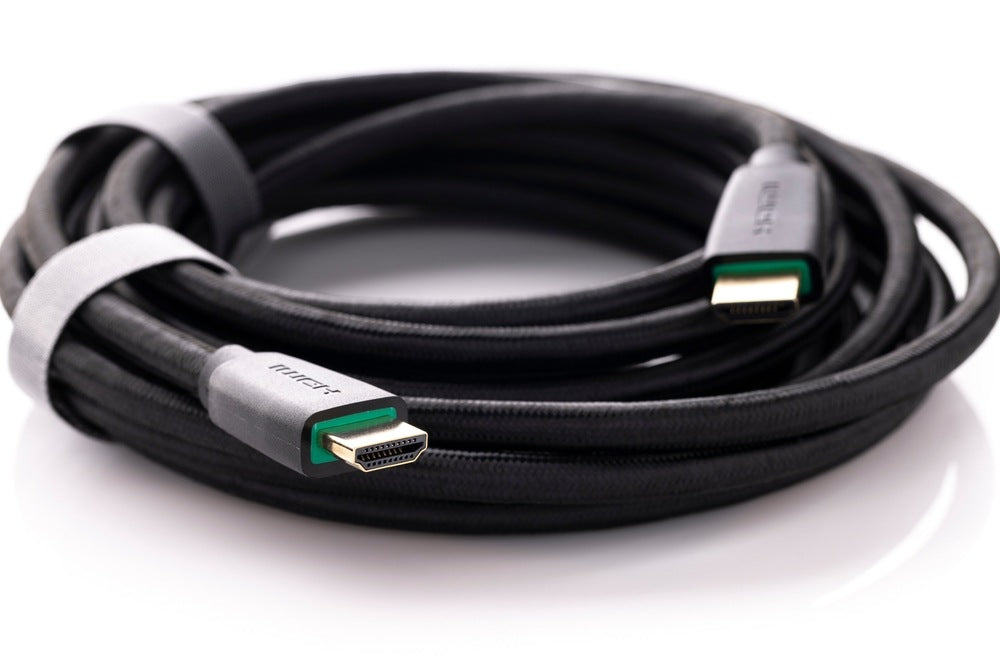
8K HDMI Fiber Optic Cables
The Benefits of Using 8K HDMI Fiber Optic Cables for Home Theaters
Have you ever watched your favorite movie at home and wished it looked even more amazing? Well, guess what? With the right cables, you can make your home theater experience truly spectacular. Moreover, today, we’re diving into the exciting world of 8k hdmi fiber optic cables and discovering how they can transform your movie nights into incredible adventures.
So, imagine this: you’re snuggled up on the couch, popcorn in hand, and the screen lights up with vibrant colors, sharp details, and smooth motion. Moreover, that’s the magic of 8K resolution, and it gets even better with the right cables. Furthermore, let’s explore what 8K HDMI fiber optic cables are, how they work, and the awesome benefits they bring to your home theater.
What Are 8K HDMI Fiber Optic Cables?
So, first things first, let’s break down what we mean by 8K HDMI fiber optic cables.
What is HDMI?
So, HDMI stands for High-Definition Multimedia Interface. Moreover, it’s a special kind of cable that connects devices like your TV, gaming console, and Blu-ray player to share audio and video. Therefore, it’s the cable that lets you enjoy your favorite movies, shows, and games in high quality!
What Does 8K Mean?
Now, let’s talk about 8k hdmi fiber optic. This refers to the resolution of the video. Moreover, just like a picture is made up of tiny dots called pixels, video is made of lots and lots of pixels, too. Therefore, the more pixels there are, the clearer and sharper the image looks.
Standard Definition (SD): About 480 pixels wide.
High Definition (HD): About 720 or 1080 pixels wide.
Ultra High Definition (4K): About 3840 pixels wide.
8K: About 7680 pixels wide! That’s four times the resolution of 4K!
With 8K, everything looks super detailed, making you feel like you’re right in the action!
What is Fiber Optic?
So, now, what about fiber optic? This is a special type of cable that uses tiny strands of glass or plastic to send data using light. Moreover, it’s like having a super-fast delivery system for information. Fiber optic cables can carry a lot of data over long distances without losing quality, making them perfect for high-resolution video and audio.
Combining 8K and Fiber Optic
When you put it all together, 8K HDMI fiber optic cables are cables that connect your devices and let them share stunning 8K video and audio using light. Now that we understand what these cables are, let’s discover the benefits they bring to your home theater experience!
The Amazing Benefits of 8K HDMI Fiber Optic Cables
1. Incredible Picture Quality
One of the biggest advantages of using 8k hdmi fiber optic cables is the incredible picture quality they provide. With 8K resolution, everything you watch will be clearer and more detailed. Imagine seeing every leaf on a tree or every ripple in a lake! It’s like stepping into a real-life painting.
2. Smooth Motion for Action-Packed Scenes
Do you love action movies or video games? Then you’ll appreciate how 8K HDMI fiber optic cables help deliver smooth motion. They can handle high frame rates, which means you’ll see fast movements without any blurring or lag. Whether it’s a car chase or a superhero flying through the air, everything will look super smooth and exciting!
3. Long-Distance Performance
Have you ever experienced a blurry picture or dropped signal when using long cables? With fiber optic technology, you won’t have to worry about that! fiber optic 8k hdmi cable can transmit signals over long distances without losing any quality. So, whether your TV is close or far away from your devices, you’ll still get the best picture and sound!
4. Lightweight and Flexible
Another cool thing about fiber optic cables is that they are lightweight and flexible. This means they’re easier to install and manage. You won’t have to deal with heavy, thick cables that are hard to bend or hide. Instead, you can easily route them behind furniture or along walls without any hassle.
5. High Bandwidth for High-Quality Audio
Not only do these cables provide amazing video quality, but they also support high-quality audio. You know how much fun it is to hear every sound in a movie? With 8K HDMI fiber optic cables, you’ll enjoy crystal-clear sound that makes you feel like you’re right in the middle of the action. Whether it’s the roar of a crowd or the subtle rustle of leaves, every sound will be vivid and immersive.
Conclusion
Congratulations! You’ve just learned about the amazing world of 8k hdmi fiber optic cable and how they can enhance your home theater experience. From incredible picture quality and smooth motion to easy setup and eco-friendliness, these cables are a fantastic choice for anyone who loves movies and gaming.
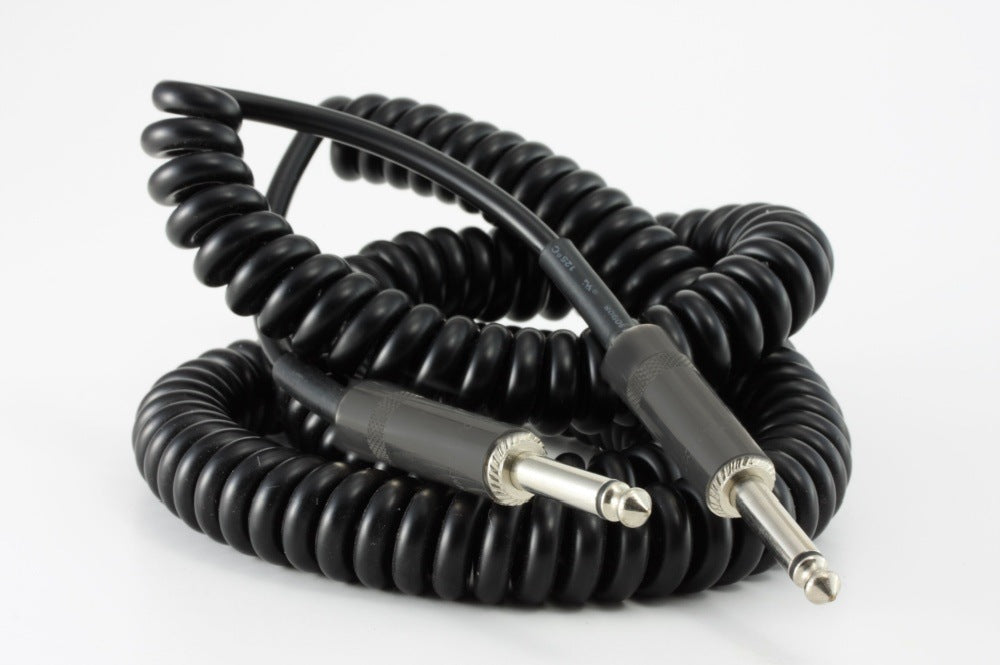
spiral aux cable
How to Choose the Right Spiral Aux Cable for Your Needs
If you enjoy listening to music or watching videos, then you’ve used a spiral aux cable before. These flexible, spring-like cables are handy for connecting your devices to speakers, headphones, or even your car stereo. But with so many options available, how do you choose the right one?
In this guide, we'll dive into the fun world of spiral aux cables. Moreover, explaining what they are, why they’re useful, and how to pick the best one for your needs. Whether you’re looking to enjoy your tunes during a road trip or need the perfect cable for your gaming headset. This blog will help you make the right choice.
What Is a Spiral Aux Cable?
Let’s start with the basics. A stereo audio coiled cable (or auxiliary cable) is a type of audio cable. It has a coiled design, allowing it to stretch and contract. These cables usually have two small plugs called "3.5mm jacks" on each end. You can use it to connect one device to another. For example, you can connect your phone to a car’s stereo system or plug it into speakers for better sound.
The coiled or spiral design makes these cables flexible and compact. When not in use, they stay short and neatly coiled. When you need a longer cable, they can stretch out, giving you more range without the tangle-prone mess of traditional straight cables.
Where Can You Use a Spiral Aux Cable?
Spiral aux cable are incredibly versatile. Here are some places where you might use them:
In the Car: If your car doesn’t have Bluetooth, you can use an aux cable to connect your phone or music player to the car’s stereo system. This lets you listen to your favorite playlists while driving!
At Home: Want to blast your favorite songs through your home speakers? Just plug your phone or computer into a speaker using an aux cable.
Headphones: Some high-quality headphones use aux cables to connect to music players or phones.
Gaming Consoles: You can even use spiral aux cables with gaming consoles or computers to enhance your gaming experience.
Now that we know what a spiral aux cable is and where you can use it, let’s get into the fun part—choosing the right one for your needs!
Things to Consider When Choosing a Spiral Aux Cable
Choosing the right spiral aux cable might seem easy, but there are a few important things to think about before making your choice. Here’s what you need to consider:
1. Cable Length
One of the first things you’ll want to think about is the length of the cable. Even though a spiral aux cable can stretch, they come in different starting lengths. If the cable is too short, you won’t have enough range to connect your devices comfortably. If it’s too long, you might end up with unnecessary tangles or bulk.
Short Cables (Less than 3 feet): These are great for close-up connections, like plugging your phone into a speaker on your desk. They’re also compact and easy to carry around.
Medium-Length Cables (3 to 6 feet): These are ideal for most everyday uses. Whether you’re connecting your phone to your car’s stereo or to headphones while moving around, this length gives you enough flexibility without too much extra cable.
Long Cables (Over 6 feet): Longer cables are useful if you need to connect devices that are far apart, like when your gaming console is far from your speakers. Just be careful—too long a cable might get tangled.
A good rule of thumb is to choose a cable that’s long enough for your needs but not so long that it becomes a hassle to manage.
2. Build Quality
Next, you’ll want to consider how well the cable is made. The build quality of a spiral 3.5 mm affects how durable it is and how good it is at delivering sound.
Material: Look for cables made with high-quality materials, like gold-plated connectors and durable plastic or rubber. Gold-plated connectors reduce signal loss and corrosion, giving you better sound quality over time.
Cable Jacket: Some cables come with a special protective jacket that helps prevent damage from bending or pulling. If you plan to use the cable often or carry it with you, choosing one with a sturdy jacket is a good idea.
Strain Relief: Cables that have strain relief near the connectors (the part where the plug meets the cable) last longer because they’re less likely to break or fray from frequent use.
Conclusion
Choosing the right spiral headphone cable doesn’t have to be complicated. By thinking about things like cable length, build quality, sound performance, and fun features, you can find the perfect cable to suit your needs. Whether you’re jamming out to your favorite songs, watching a movie, or leveling up in a game, the right aux cable can make all the difference in your experience.
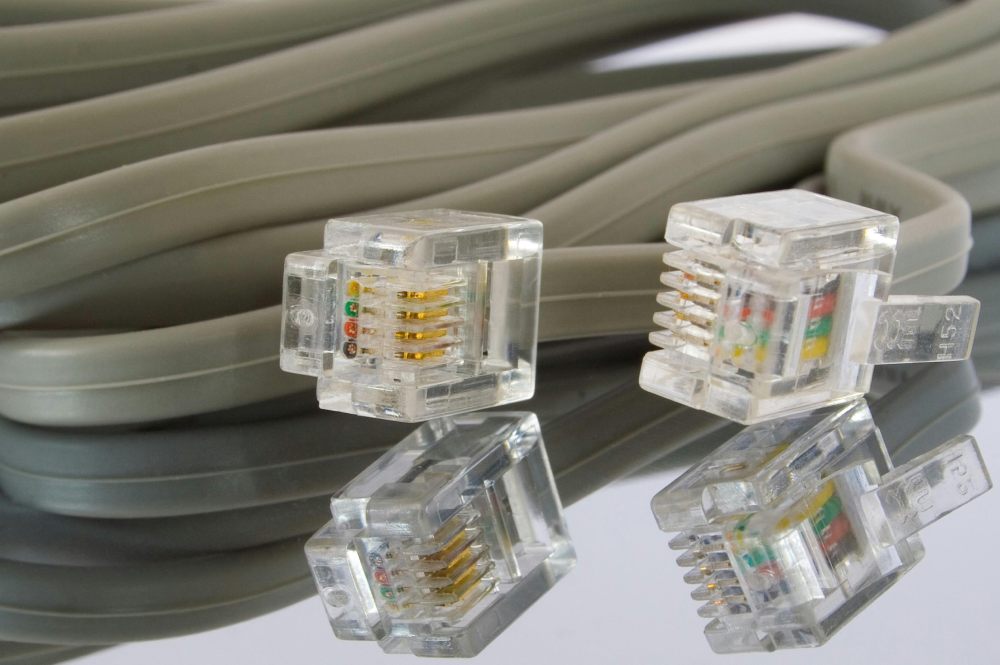
Ethernet Cables
Types of Ethernet Cables: Which One Do You Need?
So, today, we're going to dive into the fascinating world of Ethernet cables. You might be wondering, "What’s an Ethernet cable, and why do I need to know about it?" Don’t worry. Moreover, we’re going to uncover all the types of ethernet cables mysteries together. So, by the end of this blog, you’ll be an Ethernet cable expert!
What is an Ethernet Cable?
Moreover, first things first, let's understand what an Ethernet cable is. Furthermore, imagine you have a super-fast highway for your internet. Moreover, an Ethernet cable is like the road that connects your computer, gaming console, or smart TV to the internet. Furthermore, without this cable, your devices wouldn't be able to talk to each other or to the internet.
Why Do We Need Ethernet Cables?
So, ethernet cables help us enjoy all the cool stuff we do online, like playing games, watching videos, or doing homework. Moreover, they ensure that our internet connection is strong and fast.
Furthermore, if you love streaming cartoons or gaming with your friends, having the right types of ethernet cables is super important. Moreover, now, let’s explore the different types of Ethernet cables you might come across.
Types of Ethernet Cables
So, there are several types of Ethernet cables, and each has its unique features. Moreover, let’s break them down one by one:
1. Cat5 (Category 5) Cable
Speed and Distance: Cat5 cables can support speeds up to 100 Mbps and are effective for distances up to 100 meters (about the length of a football field!).
When to Use: These types of ethernet cables are a bit older and mostly used for basic internet tasks, like browsing the web or checking emails. They’re good for small networks where you don’t need super-fast internet.
Fun Fact: Cat5 cables were widely used in the early 2000s. They’re like the grandpas of Ethernet cables!
2. Cat5e (Category 5 Enhanced) Cable
Speed and Distance: Cat5e cables can support speeds up to 1 Gbps (that's 1,000 Mbps!) and can also go up to 100 meters.
When to Use: If you want a little more speed for streaming videos or online gaming, Cat5e is a better choice. It reduces interference, which means a clearer connection.
Fun Fact: "Enhanced" means it’s improved over the old Cat5 cables, making it more reliable for today’s internet needs!
3. Cat6 (Category 6) Cable
Speed and Distance: Cat6 ethernet cables can handle speeds up to 10 Gbps (that’s super fast!) and can work effectively up to 55 meters.
When to Use: Use Cat6 cables if you’re into serious gaming or have lots of devices connected to your network. They’re great for homes with high-speed internet plans.
Fun Fact: Cat6 cables have better insulation, which helps reduce noise and interference. They’re like the superheroes of Ethernet cables!
4. Cat6a (Category 6 Augmented) Cable
Speed and Distance: Cat6a cables support speeds of 10 Gbps but can reach up to 100 meters.
When to Use: These cables are perfect for large homes or offices with heavy internet use. They ensure a strong connection even when multiple devices are online.
Fun Fact: The "a" in Cat6a stands for "augmented," which means it’s an upgraded version of Cat6. Think of it as a superhero with even more powers!
5. Cat7 (Category 7) Cable
Speed and Distance: Cat7 cables can handle speeds up to 10 Gbps and can go up to 100 meters.
When to Use: Cat7 cables are great for future-proofing your home network. If you want to ensure you’re ready for anything the internet throws at you, these cables are a wise choice.
Fun Fact: Cat7 cables have shielding to protect against interference. It’s like having a protective shield around your internet connection!
6. Cat8 (Category 8) Cable
Speed and Distance: CAT8 Lan Flat Cables cables are the fastest, supporting speeds up to 25-40 Gbps! They can run effectively up to 30 meters.
When to Use: If you’re a super gamer or a tech enthusiast, Cat8 is your best friend. They’re ideal for data centers or places that need lightning-fast internet.
Fun Fact: Cat8 cables are the newest kids on the block, designed for high-performance networking. They’re like the flash of Ethernet cables!
Conclusion
Now you know all about Ethernet cables! From the basic Cat5 to the speedy Cat8, there’s a cable for every need. Understanding these cables helps you make smart choices about your internet connection, whether you’re gaming, streaming, or learning.
Remember, just like in a video game, having the right fiber optic HDMI cables can make all the difference. Next time you set up your internet or connect your devices, you’ll know exactly which Ethernet cable to choose. Happy surfing, young internet adventurers!
